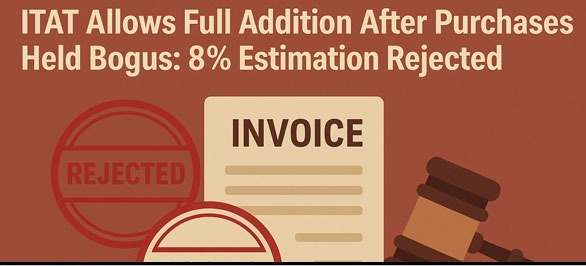K. Kannan, J.@mdashAll the three revision petitions pertain to the same premises and they have been brought together with the consent of both counsel. The subject matter in Civil Revision No. 756 of 1996 has been originally instituted at the instance of the Punjab Khadi Mandal and after the formation of Kashetariya Punjab Khadi Mandal, it was also added as a party. This petition for eviction was dismissed on a technical ground that the requirement of a landlord of a non-residential purpose was impermissible. The subsequent petition came to be filed by Kashetariya Punjab Khadi Mandal which is the subject of petition in Civil Revision No. 1777 of 1999. The petition for eviction by the Kashetariya Mandal was for the same purpose of personal need when they were contending that the portion of SCF 9 which was in the occupation of tenants was also required, since the existing remaining portion of the property in the hands of the landlord was not sufficient. The third revision petition was at the instance of the tenants in Civil Revision No. 5547 of 1999 in so far as the tenants'' contention, which was rejected, that the subsequent petition filed by the landlord was not maintainable, being barred by the provisions of Order 2 Rule 2 CPC. There is no contest between the parties that the petition for eviction could not have been thrown out only on the ground that the personal requirement could not be urged in respect of tenancy for commercial purpose. The issue that would fall for consideration would only be the point that has been taken which is the subject of revision in Civil Revision No. 1777 of 1999, namely, where the landlord had established the bona fides of his requirement. The appellate authority had observed, inter alia, that the petitioner had not brought out the ingredients of Section 13 by a disclosure of the existence of other building which the landlord was in possession of, at the time when eviction was sought in the same town. This reasoning was on the admitted fact that the landlord owned the shop in SCF No. 8 which had not been specifically spelt out in the petition as filed. The learned counsel for the landlord would contend that there is no specific proforma of pleading which the law spells out and by a conjoint reading of the entire body of the petition and the rejoinder filed by the landlord, it would be evident that the landlord had not concealed in the existence of other shop in SCF No. 8 The counsel would refer to the decision of this Court in Banwari Lal Versus Ram Parkash and another-(2009) 2 RCR (Rent) 160 where the Court held that though the ingredients of Section 13(3) themselves are mandatory in nature, but there is no specific form of pleading which was required to be given. The Court also held that it was always open to the parties to plead the ingredients of Section 13(3) of the Act in any form given under the Act.
2. Section 13(3) in so far as it refers to the bona fide requirement of the landlord would spell out the need in the following words:
13(3)(a)(2)(ii)-In the case of non-residential building or rented land, if (a) he requires it for his own use; (b) he is not occupying in the urban area concerned for the purpose of his business any other such building or rented land; and (c) he has not vacated such a building or rented land without sufficient cause after the commencement of this Act, in the urban area concerned.
The above provision stipulates three aspects to be established. The first ingredient, as applied to this case is the requirement of the landlord that the existing premises were not sufficient and they had to store their articles in the godown at Kharar. The second ingredient is that he was not occupying in the urban area concerned of any other building. In this case, it is not specifically stated that the Shop No. 8 was in their occupation. But the counsel for the petitioner points out from the pleadings that worth of the shop in the possession of the tenants was described as Shop No. 8 belonging to the petitioner. In para 3 of petition, it is stated that there was no space available in the SCFs'' area with the petitioner, but the reference to SCFs, according to the petitioner, must be read as the existing area in the SCF No. 8 and the remaining portion of 9. In the rejoinder filed by the petitioner after the written statement was filed in paragraphs 3 and 4, the landlord had stated that the accommodation which the petitioner had in SCF and adjoining SCF 8 which constituted the bhandar of the petitioner was not sufficient. I am prepared to go as far as to state that the pleadings were sufficient with reference to the existence of SCF No. 8 and a portion of SCF No. 9. But, in this case, the learned senior counsel for the respondent points out that even apart from SCF 8 and remaining portion of 9, the landlord had actually in his possession some more portions of SCF 9 which were in the hands of two other tenants and the landlord had secured the eviction of two other tenants and inducted new tenants. This was deliberately not disclosed by the landlord.
3. The learned senior counsel points out to the specific reference in the written statement in paragraph 5 where it is stated that two shops were got vacated by the petitioner and the same had been re-let at enhanced rent and on that ground itself, the petition was liable to be dismissed. Joining issues with the contention raised in the written statement, the landlord has stated in the rejoinder that the contention raised in paragraph 5 was wrong and denied. It is added, "after the judgment of the Apex Court, no shop was let out." I find this to be rather a case of ''clever pleading'' as if to state that after the judgment of the Supreme Court allowing for the provisions of the Punjab Act extending the requirement of the landlord for non-residential building also to be extended to Chandigarh, the tenant had not let out any property. u/s 13(3), any property that had been in the occupation of the tenant which the landlord had vacated should be set forth. The learned counsel for the petitioner would read this provision u/s 13(3) to mean that the landlord must have vacated himself some other building in his occupation and if not, this provision will not apply. I would hold the reading of the Section in the manner canvassed by the counsel to be erroneous. The expression "he has not vacated such building or rented land" as found in clause (c), referred to above, must be understood as either a property which the landlord vacated and kept vacant in its occupation or any building which is in the occupation of any tenant of the landlord which he had got vacated. I would feed into the expression, "he has not vacated" also to include a situation of a property that is "got vacated" by the landlord. In this case, if the landlord had two other tenants after the formation of Kashetariya Mandal and they vacated the portions of the property that fell vacant and they had been rented out afresh to tenants, then the non-disclosure of that event must be taken as crucial. It cannot be contended even without pleading that other portions of property which he had secured eviction were not suitable.
4. It is essentially a matter of pleading that any other property which the landlord was in possession of or any other property which the landlord could obtain possession of after the eviction was not suitable and therefore the property in the possession of tenants was required for bona fide use. In this case, the evidence of AW1 reads thus,
Previously SCF 8 and 9 were Punjab Khadi Mandal since 1993. They are in the name of Kashetariya Khadi Mandal....It is correct that before 1993 Punjab Khadi Mandal was receiving the rent.... Besides respondents, there are two other tenants in the front portion whose names are Suresh Kumar and Radha Krishan and Rajesh Kumar and Suresh Kumar is the tenants since 26.06.1993 (sic).
If Radha Krishan and Rajesh Kumar (or Suresh Kumar) had been tenants since 13.06.1993, it should be a case of either some other tenants in the respective portions had vacated and the landlord obtained possession of the property available to rent it out by fresh tenancy or it could be a situation where the landlord himself was actually in possession of the property and was creating a new tenancy in favour of these two persons. In this case, I find the exact location where Radha Krishan and Rajesh Kumar were tenants have not been clearly disclosed anywhere in the evidence. That precisely is the issue. The landlord cannot allow for any vagueness either in the pleadings or in evidence. If he had two other tenants (or three ?) and those two persons had come about in the respective portions only on 29.06.1993, it ought to have been set forth in the petition as to how other portions of property which had fallen vacant came to be rented out subsequent to the commencement of the Act and how they were not fit for being occupied for their additional need which they were claiming now in order that they evicted the tenant. The requirements of clauses (b) and (c) were definitely not fulfilled.
5. The learned counsel for the petitioner refers to me several decisions and I would set them out only to point out to the irrelevance. The decision cited in the judgments in Rajan Versus Poil Raghavan- 2009 (1) RCR (Rent) 429; Matadin s/o Datadin Versus Smt. Manoramabai-1997 (1) RCR (Rent) 379; National Spiritual Assembly of India Versus Mah. State of Khadi and Vill. Ind. Board-1995 (2) RCR (Rent) 130; and Maganlal son of Kishanlal Godha Versus Nanasaheb son of Udhaorao Gadewar-2009 (1) RCR (Rent) 16 must be only discarded for the only reason that the language employed under clauses (b) and (c) are peculiar which I do not find in the other respective State enactments which the above decision deal with. All these decisions relate to the examination of the content of bona fides. I do not want to compare the reasonings of the bona fides contained in the decisions with this case, when the petition fails in its fundamental requisite of what is required to be stated to prove the bona fides in the manner contemplated in the local State enactments.
6. In

